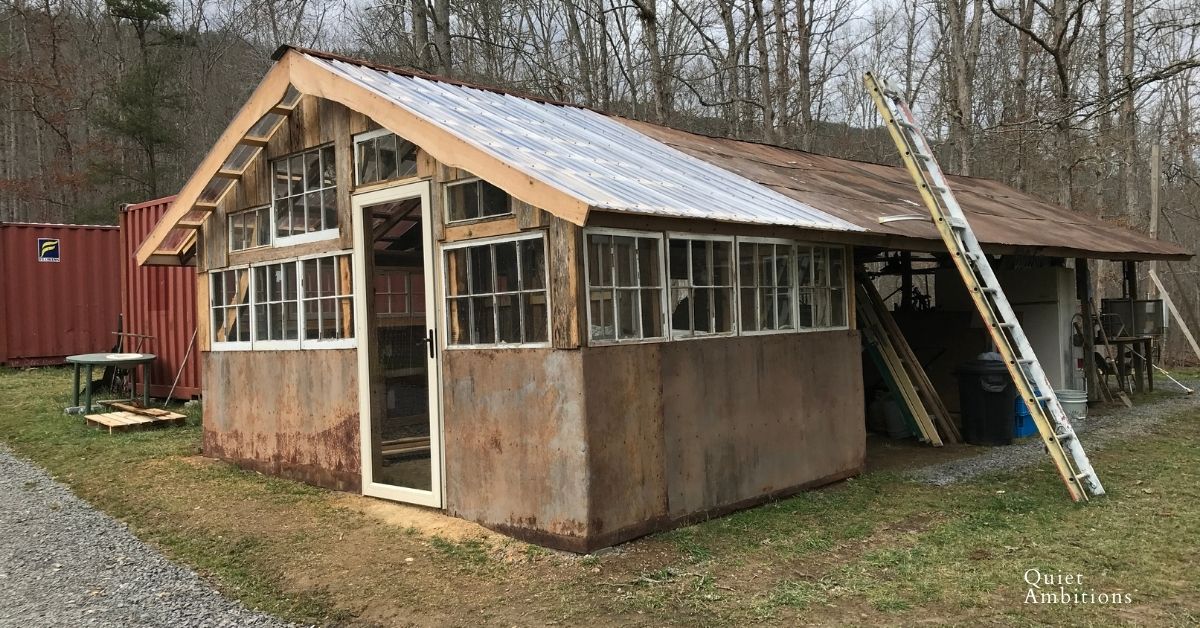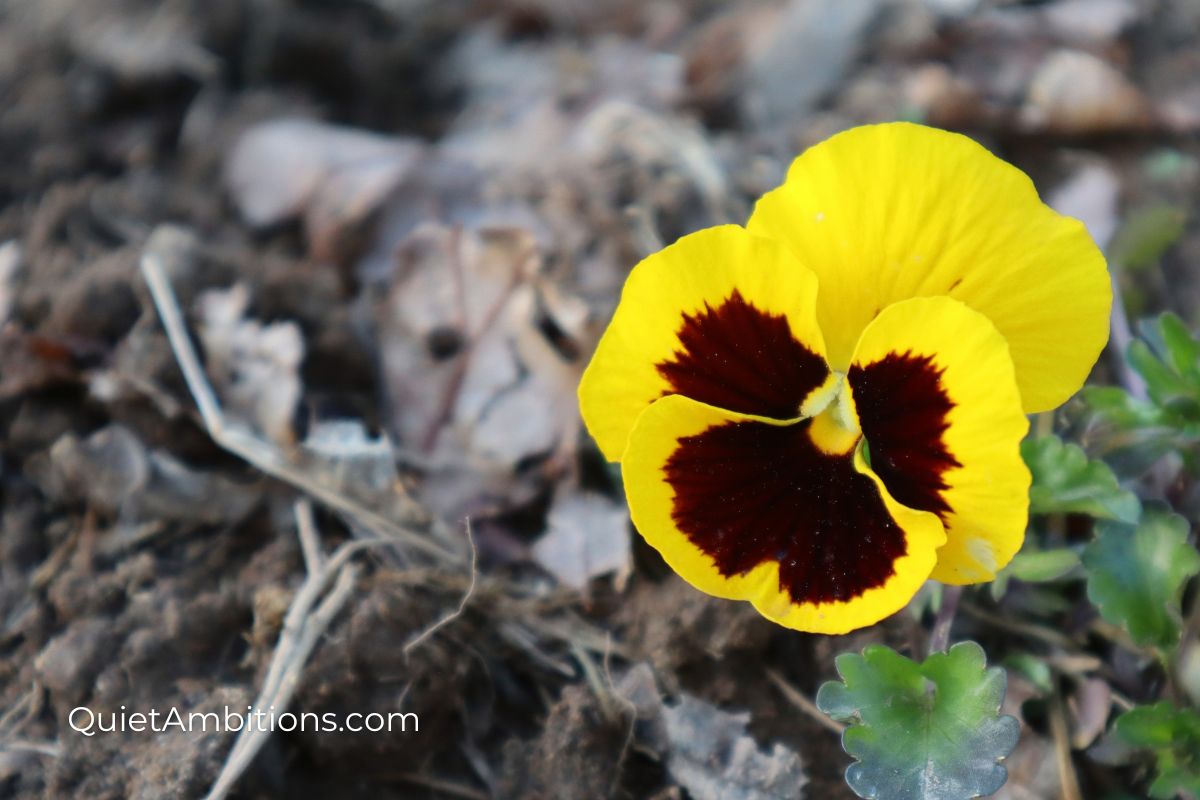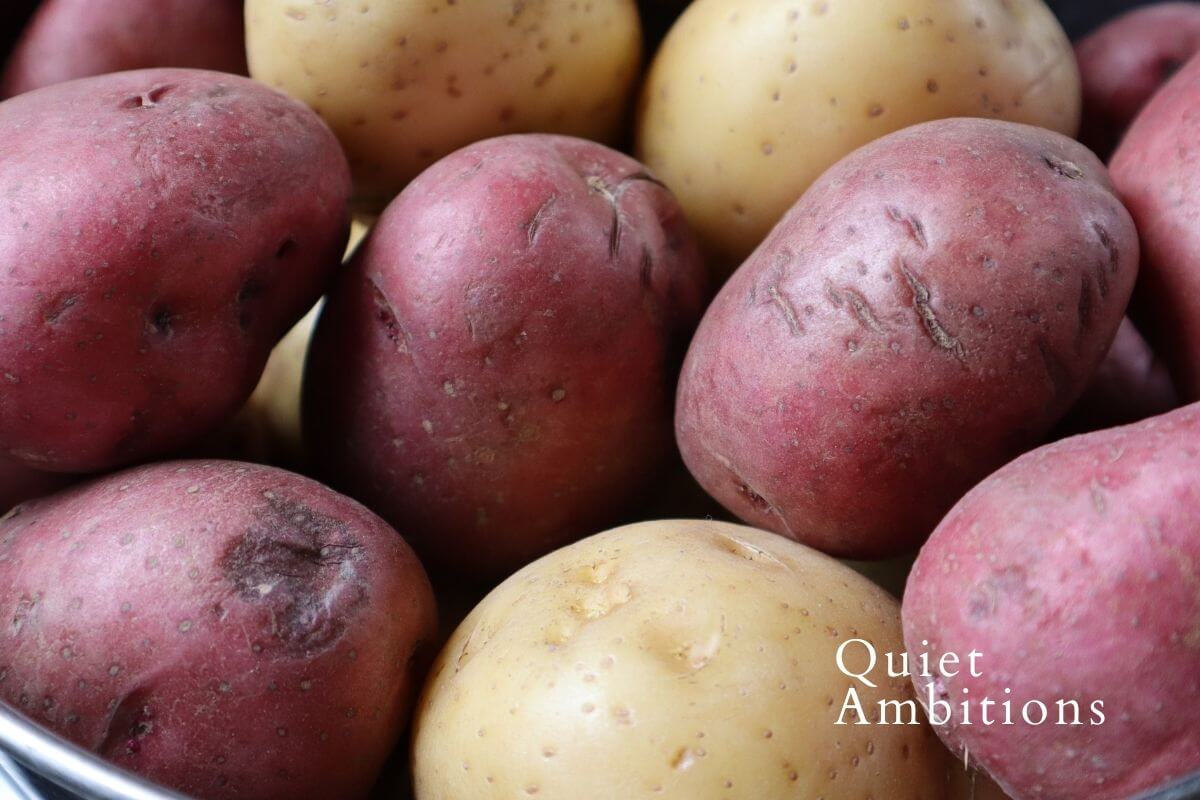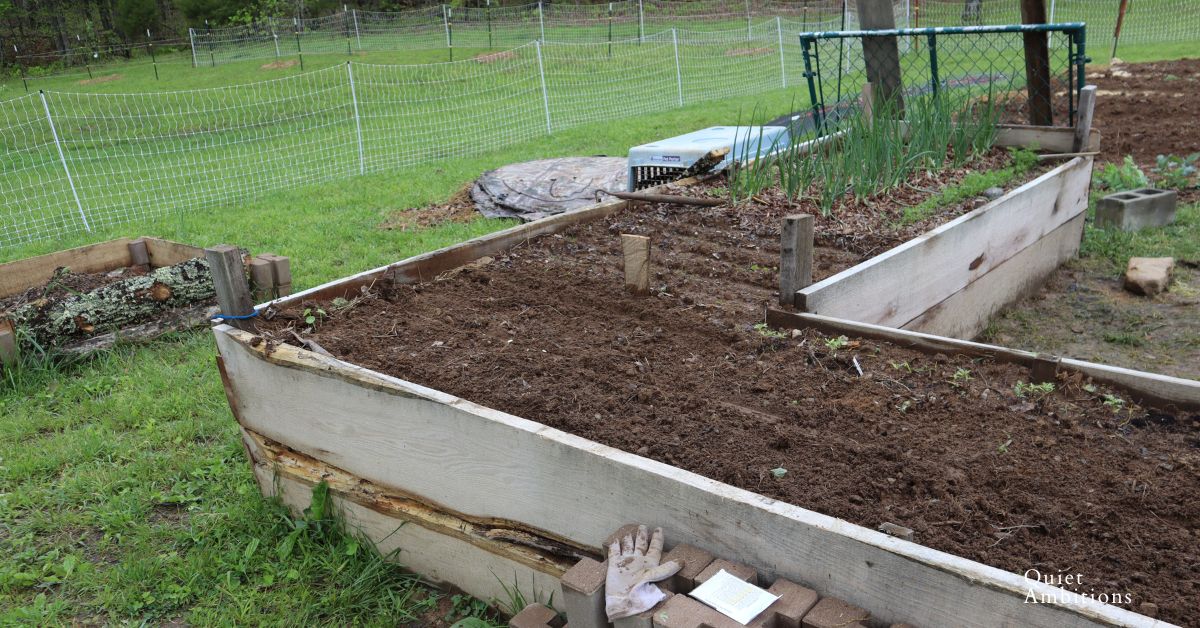How to Grow Lettuce in Your Garden
Have you ever purchased lettuce from the grocery store, only to have it go bad in your fridge before you had a chance to use it? Leafy greens like lettuce don’t keep for long, especially if they’re jostled around during transportation. Thankfully, lettuce is easy to grow in your garden, whether you have a full garden bed or some containers on your porch! Let’s learn how to grow lettuce in your garden.
What are the Different Types of Lettuce?
There are two main types of lettuce: head lettuce and leaf lettuce.
Head lettuce
Forms ‘heads’ that are usually harvested whole, like heads of lettuce you might find at the grocery store. Butterhead lettuce, romaine lettuce, and crisp head lettuce could all be considered head lettuces. These heads are sometimes tight like iceberg lettuce and sometimes loose like a romaine lettuce. Either way there is a definite head to the plant. (Iceberg lettuce is usually harder to grow in the home garden than some other varieties.)
Leaf lettuce
Doesn’t form distinct heads, so it is often harvested by snipping off smaller individual leaves. Think of it more as a loose salad green than a head of lettuce.
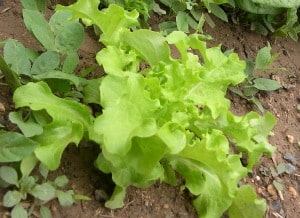
Growing Lettuce Quick Tips
- Suggested Soil Temp: 55-65 degrees F
- When to Sow Indoors: 4-6 weeks before Spring Frost.
- When to Sow Outdoors: 2-4 weeks before Last Spring Frost or 6-8 weeks before First Fall Frost.
- When to Grow Lettuce: Spring, Fall
- Seed Depth: ⅛” to ¼”
- Days to Germination: 7 to 10 Days
- Spacing: 4” (leaf lettuce), 8” (romaine and butterhead lettuce), 16” (iceberg lettuce),
- Light Requirements: Full Sun to Partial Shade
- Watering Requirements: Moderate
How to Plant Lettuce
Lettuce seeds are quite small and fine. A good rule of thumb when planting seeds is to bury to a depth the size of the seed. So bean seeds will be an inch or so.
Lettuce seeds are tiny. They don’t need to be buried deeply. They need a bit of the warmth from sunlight to germinate properly. Lettuce seeds should only be barely covered with the soil.
How to Start Lettuce Indoors
Since lettuce can be started so early in the spring, I choose to start it right in the garden. But lettuce may also be started indoors and then transplanted out.
You will need something like a seed starting tray, or at least some kind of small containers, along with potting soil or seed starting mix. I just use potting soil for my seed starting. Plant lettuce seeds in the small containers, providing adequate warmth, light, and moisture for germination. cover the seeds lightly with soil. 1/4 inch is fine.
When the seedlings have sprouted be sure to keep them under lights until they are ready to go out into the garden. Let the plant get a several good real leaves before you move them out. I’ll talk more about how to plant them out lower on this page.
While not necessarily an indoor technique, you can also make “mini greenhouses” using something like a milk jug. This protects young seedlings from extreme temperatures, but allows them to begin growing in the garden. I used this method often when I lived in Colorado! Check out winter sowing for more on this method.
When to Plant Lettuce Outdoors
Plant lettuce seeds as soon as the outdoor soil can be worked, usually 2-4 weeks before Last Spring Frost. (Workable just means the ground is not frozen and you can loosen the soil.) Lettuce does well in cool weather and needs to be planted early.
Succesion Planting
For longer harvests of lettuce, plant in smaller sections and then plant another round of seeds every two weeks or so. This will ensure you have a continual supply of fresh greens.
When the weather gets really hot, it is sometimes worth it to just stop planting lettuce and wait until the end of summer to start again with a fall crop. Sowing around 6-8 weeks before First Fall Frost.
How to Plant Lettuce Seeds
There are two options for planting your seeds directly in the garden. In rows, or scattered. I like an orderly garden so I usually go with rows. But if you’ve got a space you want to fill, just scatter the seeds around. No rows required.
- I like to make a small indent with either a hoe, or stick to mark where my seeds will go. This is just to keep things in an orderly row. Sow your seeds by sprinkling them lightly over your row and then and cover with ⅛” to ¼” of loose soil. This allows seeds to receive the sunlight required for germination. I’ve also just run my hand through the row basically mixing in the seed into the top layer of soil.
- You can also choose an area and scatter the seeds over the whole area. Again you’ll want to cover the seeds with 1/8″ to 1/4 inch of soil or just run your hand over the area to scratch the seeds into the top layer of soil.
Remember to keep the area small enough that you’ll be able to reach in for weeding and harvesting. So if you have a 3’x3′ area. You can probably reach in from all sides, although it might be a stretch according to how long your arms are. If you get ambitious and go with 5′ x 5′, you won’t be able to reach the middle without stepping on plants.
Lettuce prefers well-draining soil that is semi-rich in organic matter and contains nitrogen. haha, what vegetable garden plant doesn’t.
The easiest way to sow lettuce is to simply scatter it on loose dirt and then run your hand over it mixing the seeds in with the top layer of dirt. Lettuce must have sun to germinate, so you don’t want it very deep.
Planting Lettuce Seedlings that Have Been Started Indoors
Lettuce, especially varieties like romaine, may benefit from being started indoors under bright light prior to planting in the garden. Harden off young plants and transplant directly into the garden once 4-6 mature leaves have appeared on the seedlings.
To harden off your seedlings just bring the trays out for some time in the ‘real’ world. Start with an hour or so, then the next day a couple hours and so on. Do this over 4 or 5 days. This allows your seedlings time to adjust to the conditions outside your protected seed starting area.
When you are planting the seedlings out, you can choose rows, or just an area to fill. Use a small garden trowel to loosen the soil where you are planting, make a hole, and place the root ball of your seedling in the hole. Tamp down lightly so the roots make contact with the soil around it but don’t pack it down tight. Give it some water and maintain as needed for the rest of the season. Sometimes if it is especially hot or windy you might want to protect your seedlings for a day or so. Give it some shade with a cloth or even lay a light sheet across the area. This can give the transplants a little time to adjust to the outdoors.
Companion Planting with Lettuce
Because lettuce doesn’t tolerate hot temperatures (which is compounded by strong sunlight as the season progresses), it’s often planted around taller plants like corn, tomatoes, pole beans, or trees and bushes that will shade the lettuce leaves and keep them from bolting in warmer weather.
For example, I’m planning on using the area underneath my Okra plants next year. This is my first year growing okra and I’ve realized that the area underneatg would be perfect for planting some lettuce or some other crop that will like the protection.
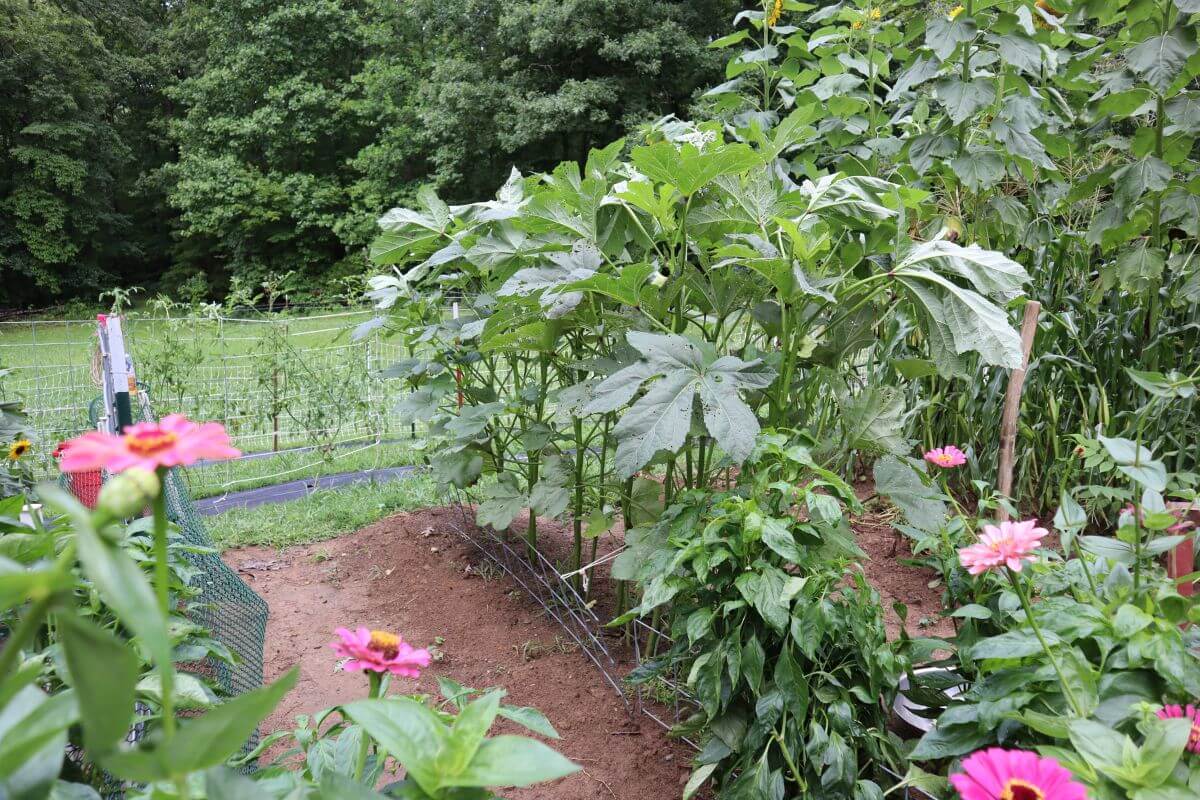
Lettuce grows more quickly than other crops. When space is tight, lettuce is sometimes interplanted with crops that require longer growing season, to make maximum use of available growing space. Again the tall plants of Okra is a great example. I can plant my lettuce after the okra is established and tall enough for the lettuce to take up the area underneath. Okra grows all season I can plant lettuce to grow quickly and mature while the okra is still growing and producing.
There are also some plants you should NOT grow with lettuce, specifically plants in the cabbage family, which are said to reduce lettuce seed germination.
Growing Lettuce
Lettuce is fairly easy to grow. Just provide moderate water as needed. You’ll also want to control weeds by pulling or spreading mulch to suppress them.
Thinning
When you plant by direct seeding lettuce should be thinned, depending on the variety. This varies a lot depending on the type of lettuce you’re planting. Check your packages for the correct spacing for the variety you are planting.
- Leaf lettuce generally requires a small 4” spacing.
- Romain and Butterhead Lettuces should be thinned a bit wider at 8″ apart.
- Iceberg lettuce however requires much more space. Something like 16″ apart. (apparently they don’t like competition)
If you’ve transplanted out seedlings you’ll simply place them at the appropriate spacing.
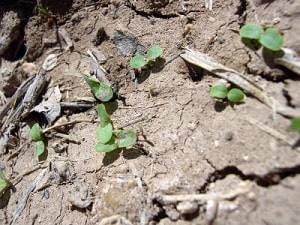
Light Needs
Lettuce needs sunlight, but it can tolerate partial shade. In fact, shade is very beneficial during hot weather, as it protects plants from strong, warm sunlight.
Water Needs
Because they don’t have deep roots, lettuce generally requires consistent, moderate water. Don’t drown the plants! But also don’t let them dry out and become brown.
Pests, Diseases, & Other Common Problems
Overall, lettuce is a relatively trouble-free crop that is easy to grow, barring a few issues that follow.
Bolting
In warm temps and long days, lettuce will start bolting (i.e., go to seed). When lettuce bolts, the leaves get bitter and the harvest is over. A stem will begin forming at the center of the plant. This stem usually grows tall and flowers and then seeds will form at the top.
At that point, the leaves will grow bitter. Either pull the plant and plant some new seed. Or let the plant bolt and collect the seeds and store in a paper sack for next year’s garden!
To avoid bolting, plant lettuce in cooler weather in the spring. Once the weather warms up, you may also cover the plants with something like a shade cloth, to cool them down and help delay bolting. The heat of the summer will likely affect your lettuce so you might want to take a break and then plant again late summer for the cool fall weather.
Aphids on Lettuce
Aphids are a common garden pest that can impact lettuce as well. They are little bitty insects that suck the sap from plants, which stresses the crop and can actually spread a disease called Lettuce Mosaic Virus. I abhor aphids! They multiply quickly!
Plant radishes next to lettuce as a trap crop. The radishes will attract the aphids away from the lettuce greens and onto the radish greens instead.
Other ways to control aphids include spraying them off the plants using your water hose. Believe it or not, I’ve read that aphid legs are so weak if you wash them off they simply can’t climb back up. Now I’ll admit it sounds strange so it may just be an old wives tale but…. All I know is washing them off with a water hose seems to work.
You can also apply something like soapy water, neem oil, or diatomaceous earth.
Beneficial insects like ladybugs are also natural predators of aphids. Many times if you leave the aphid issue alone for a short time… the ladybugs show up. The other option is to buy ladybugs. You can get them at some garden supply stores or garden centers. Just be sure you are buying ladybugs and not asian beetles. The beetles look just like ladybugs but are very invasive.
A really good option is to sow marigolds in with your lettuce. Marigolds repel aphids and you’ll get a pretty flower at the same time.
Slugs on Lettuce
Slugs are another potential pest for growing lettuce, particularly in wet conditions. Slugs are slimy creepy little creatures! Manual removal is one option for controlling slugs. You can also use beer or molasses traps, or trap the slugs for removal using cardboard on the soil!
Birds are said to help control slugs too. Ducks make great slug control.
Growing Lettuce in Containers
Lettuce makes an excellent container crop! Simply sow your seeds in a container of prepared potting soil, providing plenty of water and sunlight.
Pots of lettuce will dry out quickly, especially once the weather warms, so check the soil often and provide water whenever needed.
When the heat of the summer comes along you can move your container to a shady area to extend the growth of your lettuce. Remember lettuce doesn’t do well in the heat. Shade will relieve the intense heat of a midsummer sun.
How to Grow Lettuce Indoors
Because it grows so well in containers, lettuce may also be grown indoors, as long as it has an adequate light source. It can be grown in sunlight, or you may have to supplement with a small grow light if you don’t receive enough strong sunlight indoors. You may grow in pots of growing medium or using hydroponic setups.
I’m hoping to be able to grow lettuce longer into the winter in our new greenhouse. I’ll update when I find out how it works. My greenhouse is not heated so I’m not sure if they will do as well as other greens like spinach and chard will. I’m pretty confident with those crops.
When to Harvest Lettuce
Lettuce may be harvested whenever the leaves reach the desired size, before leaves become too large and stronger in flavor. Lettuce will often grow back once cut, so be sure to leave the roots! Lettuce is best harvested early in the morning while it is fresh from the cool nights.
How to Harvest Lettuce
For head lettuce, you can harvest individual leaves from the outsides of the head, or wait until the head is mature enough to harvest the whole head at once. Cut it off cleanly at the bottom, leaving the root intact. Sometimes they will grow back though likely a new head will not be as nice as the original head.
For leaf lettuce, simply slice off individual leaves as desired.
I usually start out harvesting the larger leaves around the outer edge. I keep my kitchen supplied with salad greens. Inevitably, the plants get ahead of me and I will start harvesting whole plants. I then have enough to share with neighbors and friends.
Planting at 1-2 week intervals helps you to not end up with all your lettuce ready to harvest at the same time.
How to Wash Dirty Lettuce
When you are harvesting your own lettuce you’ll want to wash it well. You may find that dirt has splashed up on the leaves. You may find insects hiding in the folds. (I know ick!)
The easiest way I find is just rinse them several times in a big bowl with enough water that the leaves really swish around.
- If I’ve harvested a lot of large leaves I’ll do this a couple times with clean water then pull the leaves out one at a time and lay them on a towel to drain.
- If I’ve only got a few leaves I just run them under the faucet which is usually just fine.
How to Store Lettuce
Lettuce is a tricky green to store–it gets mushy much faster than heartier greens like kale or chard, so it only keeps up to 10 days in the fridge. (It may be able to be stored longer under optimal conditions.) The good news is fresh lasts a little longer than store purchased. Remember the lettuce you buy at the store had to do some traveling before it finally got to your house.
How to Keep Lettuce Fresh
Keep lettuce fresh by storing it in an airtight plastic bag in the fridge. I like to use a ziplock bag and I’ll put a paper towel in the bag to soak up any excess moisture.
Can You Freeze Lettuce?
Lettuce is a tender green that is very high in water, so it just doesn’t freeze well. It would become mush and completely undesirable, especially since lettuce is usually eaten raw in salads.
Canning Lettuce?
Lettuce is also not considered safe for canning. Again, it just isn’t hearty enough. Who wants a jar full of cooked, limp, mushy lettuce? Yuck.
Overwintering Lettuce
Overwintering lettuce IS possible in certain warmer zones, given proper protection! Choose varieties that are especially suited to cold weather and consider using something like a row cover or greenhouse with LOTS of protection for the tender greens.
The main benefit of winter lettuce is that it tastes incredibly sweet, like many other winter-grown veggies. For most of us lettuce is primarily a summer crop with greens like kale or chard being possible later in the season.
FAQ
Lettuce plants will continue producing until they bolt and become less enjoyable to eat, which depends largely on the season’s growing conditions. The heat of summer will often affect the condition of the plant as well. You are often better off just giving up on lettuce and waiting to plant a fall crop.
I’ve never tried this, but I’ve read online that you can take a core from a purchased head of lettuce, place it in some water, and regrow lettuce from the core! If you try this, please let me know how it turns out! It sounds like a fun project for kids to try.
Lettuce takes 40 to 80 days to reach maturity, depending on the variety. (There are LOTS of different types of lettuce out there!) Still, it remains one of the fastest and easiest garden crops to grow, so I highly recommend you give it a try.
Lettuce produces approximately 2 to 10 lbs. of lettuce per 10-foot row.

